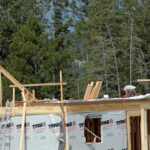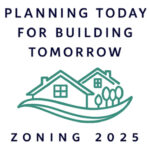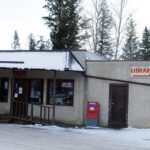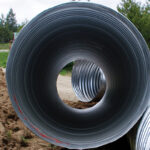Home »

K-12 school safety measures enhanced
Enhanced safety measures and $121.2 million in federal funding are on the way to British Columbia as the provincial government tightens COVID-19 safety protocols in schools.
The Ministry of Education today announced all middle and secondary students and K-12 staff will now be required to wear non-medical masks in all indoor areas, including when they are with their learning groups.
The only exceptions are when:
* sitting or standing at their seat or workstation in a classroom;
* there is a barrier in place; or
* they are eating or drinking.
Prior to these changes, masks were required for middle and secondary students and all K-12 staff in high-traffic areas, like hallways and outside of classrooms or learning groups when they could not safely distance from others.
For elementary students, wearing masks indoors remain a personal choice. These updates are part of ongoing work of the provincial education steering committee and are in alignment with provincial health updates. Updated guidelines for the child care sector will be made available in the coming week, the education ministry stated in a media release.
“To make sure schools continue to be as safe as possible for students and staff as the pandemic evolves, we have worked with provincial health and our partners on a continuous review of the guidelines, adapting and responding when needed,” said Jennifer Whiteside, Minister of Education. “We want students, their families and staff to feel confident with the safety measures in place. That’s why we’re making these updates.”
Guidelines have also been strengthened for physical education and music classes. High-intensity physical activities are to be held outside as much as possible. Shared equipment or items, such as weight machines, treadmills or musical instruments, can be used only if they are cleaned between use, according to strict school sanitization guidelines. Students using equipment or playing instruments should also be spaced at least two metres apart and masks are to be used when singing.
Since September 2020, more than $5.7 million of the K-12 Education Restart Plan for school districts has been used to purchase 3.9 million masks for students and staff.
“Educators, administrators and staff have done a great job of adapting our schools to make them safe and ensure important in-class learning continues,” said Dr. Bonnie Henry, B.C.’s provincial health officer. “Since the start of the school year, we have paid close attention to our schools and learned much, including the importance of having robust safety plans and using the layers of protection. Masks are one important layer, and these updated guidelines will strengthen how and where they should be used to protect everyone.”
To support B.C.’s COVID-19 response for K-12 education, the federal government announced $242.4 million in one-time funding for the 2020-21 school year, with the first half of the investment allocated in September. The second instalment of this funding arrived on Jan. 29. The Ministry of Education is allocating $101.1 million to school districts and $7.5 million to independent schools, and is providing school districts an additional $3.5 million to manage COVID-19 exposures in schools.
To support Indigenous learners, $8.2 million will go towards addressing learning loss and student health, technology for remote learning, education and mental health support, adapting classroom spaces and enhanced cleaning.
There will also be $900,000 allocated for six regional rapid response teams, one for each health authority and one dedicated to support independent schools, with representatives from both school and provincial health staff. These teams, announced by the provincial health officer, will continue to improve the speed of school exposure investigations, so health authorities can inform school districts and families more quickly.
Rapid response teams will conduct physical or virtual site inspections to ensure K-12 COVID-19 health and safety guidelines are being followed consistently. If there has been a significant exposure event or an in-school transmission, rapid response teams will be deployed to conduct a review and make recommendations, if needed.
School principals and vice-principals at each public and independent school are being provided with updated COVID-19 health and safety checklists to ensure they consistently follow provincial guidelines. Additionally, families in their local communities are reminded of the personal measures they can take to help keep schools safe, the ministry noted.
School districts and independent school authorities will be required to confirm every school has completed the checklist and safety plans have been updated to reflect the updated guidelines by Feb. 26. All schools will also post updated plans publicly.
“Safety measures currently in place to reduce the spread of COVID-19 in our schools have been working well. The enhanced guidelines and additional supports announced today will help maintain that safety as the pandemic evolves. B.C.’s boards of education are proud of the work that’s been done to allow students to safely return to school for full-time, face-to-face instruction. Close to 750,000 people interact with the K-12 system every day in British Columbia. We are committed to keeping in-class instruction safe for learners, their families and our communities. Boards of education are up to the task of keeping schools safe, so that in-class instruction can continue across the province,” stated Stephanie Higginson, president of the British Columbia School Trustees Association.
Andrea Sinclair, president of the BC Confederation of Parent Advisory Councils (BCCPAC) added, “As the organization representing parents provincially, BCCPAC has continued its work with ministry officials, the provincial health officer and our education partner stakeholders to ensure a school environment with even greater safety protocols for our children. We asked the ministry to do more for the safety of our children, and we appreciate the efforts all stakeholders have made to create change to the health and safety guidelines.”
One of the most important factors to keeping schools safe is a daily screening for any COVID-19 symptoms, which is why daily health checks continue to be required. To support daily screening, a new K-12 health-checker app has been developed for students and their families and can be found here.
The app will allow people to answer simple questions every day. It will inform them if they can attend school or if they need to self-isolate and contact 811 to be screened for COVID-19.
The BC Centre for Disease Control has a new website with information and resources about health and safety measures in K-12 schools, student and staff safety, and what happens when there is a COVID-19 case in school: www.bccdc.ca/schools
Information about updated guidelines
* Activities that include prolonged physical contact should not be a part of physical education or any other classroom learning. For example, activities like tag or touch football are lower risk, since students may only come into contact with each other briefly, whereas activities like wrestling or partner dancing should be avoided.
* All K-12 staff are required to wear a non-medical mask or face covering when they are in a classroom and they are away from their individual desk or workstation.
* Staff should be assigned to one learning group whenever possible. Staff interacting without a transparent barrier and with more than one learning group, or with students in more than one school, are to practice physical distancing.
* Staff must practice physical distancing and wear non-medical masks for any face-to-face meetings or interactions, including in the staff room. Staff also must hold meetings virtually whenever possible.
* Any visitor to a school is required to wear a non-medical mask.
* Even when wearing a mask, students and staff must still practice physical distancing whenever possible. Exceptions will be made for people who do not tolerate masks for behavioural or health reasons.
Within learning groups, physical distancing should also include avoiding physical contact and minimizing close, prolonged, face-to-face interactions, while spreading out as much as possible within the space available. There should be no crowding, gathering or congregating of people, even when non-medical masks are worn.
School districts and independent schools will be able to spend the second instalment of federal funding in the following areas, based on local needs:
* hiring teachers to deliver education programs, including extended transition programs;
* hiring and training custodial and administrative staff to support students in their safe return to schools and to implement school safety plans;
* purchasing additional non-medical masks or other personal protective equipment;
* improving ventilation and air systems in schools;
* increasing hand hygiene, including additional handwashing and hand-sanitizing stations;
* cleaning equipment and supplies;
* mental health support;
* software and computer or tablet loans for students learning remotely; and
* additional transportation costs to accommodate additional routes and enhanced cleaning.
The First Nations Education Steering Committee (FNESC) will distribute the $8.2 million for Indigenous students living on-reserve who attend public schools. This will be used to promote continued learning opportunities and address extraordinary COVID-19 related student needs, while protecting the health, safety and well-being of their citizens during the pandemic. FNESC will be required to report to the Ministry of Education about how the funding is used.
An education steering committee with membership from all education partners, including teachers, school staff, parents, Indigenous rights-holders, trustees and school leaders, has been meeting regularly throughout the pandemic.
The committee last month was expanded to include staff from the Office of the Provincial Health Officer, the BC Centre for Disease Control and WorkSafeBC. A provincial co-ordinator has also been appointed to continue to improve COVID-19 processes and make sure COVID-19 related health and safety guidelines are implemented consistently throughout the education system.
e-KNOW







